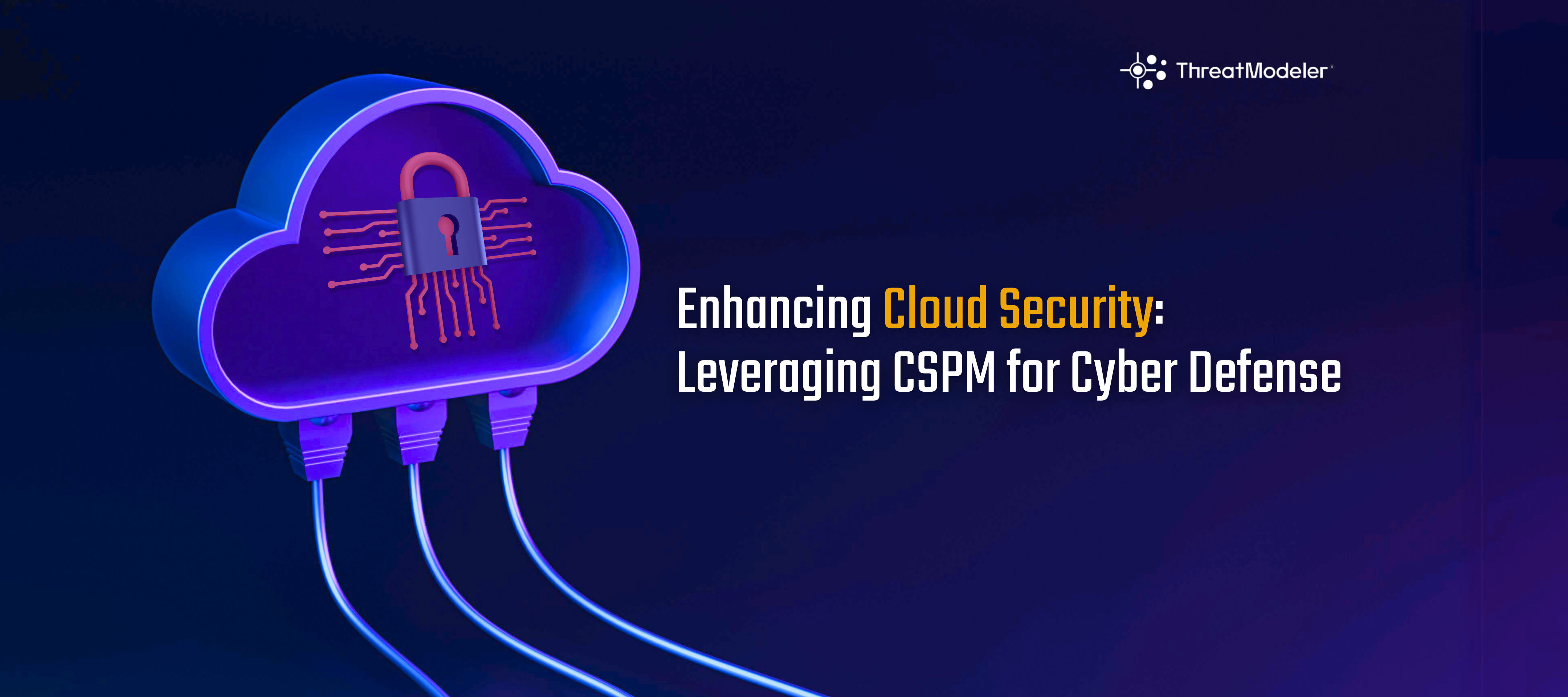Unlocking Stronger Cloud Security: Let's simplify CSPM and why it matters.
In the world of cybersecurity, CSPM stands tall as a vital defense. Blend it with Threat Modeling, and you've got a powerful combo against cyber threats.
Breaking Down CSPM:
CSPM keeps an eye on your cloud security. It checks configurations, ensures compliance, and spots vulnerabilities. Why? To tackle risks like misconfigurations, unauthorized access, and possible compliance issues.
The Need for CSPM
Statistics reveal the urgency of robust CSPM implementation. According to Gartner, by 2025, 99% of cloud security failures will be the customer's fault, often due to misconfigurations, emphasizing the need for proactive security measures.
Consider a scenario where a multinational enterprise neglects proper CSPM practices. This leads to an unintentionally exposed storage bucket, resulting in a severe data breach and legal consequences.
The Role of Threat Modeling in CSPM
Threat Modeling, a proactive approach to identifying and mitigating potential security threats, seamlessly integrates with CSPM. It involves systematically analyzing system components, identifying vulnerabilities, and devising countermeasures to mitigate risks.
Example: Imagine an organization adopting CSPM tools for their cloud environment. Through Threat Modeling, the team conducts a comprehensive analysis, identifying potential weaknesses in cloud configurations. This proactive approach allows them to rectify vulnerabilities before they are exploited, aligning with CSPM's objectives of proactive risk management.
How Threat Modeling Strengthens CSPM
- Identifying Vulnerabilities: Threat Modeling assesses potential threats and vulnerabilities, complementing CSPM's continuous monitoring.
- Preventive Measures: By predicting potential attack vectors, Threat Modeling helps in proactively addressing security gaps, aligning with CSPM's goal of risk mitigation.
- Enhanced Remediation: It provides insights for more effective remediation strategies, aiding CSPM's automated solutions for swift rectification of vulnerabilities.
- Attack Surface Analysis: Threat Modeling deeply scrutinizes the attack surface of cloud environments. It dissects the infrastructure, APIs, access controls, and data flow to identify potential points of exploitation. This comprehensive analysis ensures a detailed understanding of where vulnerabilities might arise, allowing for targeted mitigation strategies within CSPM.
- Threat Enumeration and Classification: Beyond identifying vulnerabilities, Threat Modeling catalogs threats based on severity and potential impact. This detailed classification provides a structured approach for CSPM tools to prioritize remediation efforts, focusing on critical threats first and efficiently allocating resources.
- Integrating Secure Design Principles: Threat Modeling doesn't merely identify vulnerabilities but also emphasizes secure design principles. It guides cloud architects and developers in implementing security by design, influencing decisions regarding data encryption, access controls, and secure coding practices. This integration ensures that CSPM aligns with a robust foundation of security at the architectural level.
- Dynamic Threat Environment Mapping: Threat Modeling continuously evolves alongside the dynamic threat landscape. It adapts to new threats and attack methodologies, ensuring that CSPM remains updated and agile in addressing emerging risks. This adaptability is crucial in the constantly evolving cloud ecosystem.
- Quantitative Risk Analysis: In addition to qualitative assessments, Threat Modeling incorporates quantitative risk analysis. It assigns values to risks based on probability and potential impact, providing a more precise understanding of the risk landscape. These quantifications can guide CSPM in prioritizing mitigation efforts based on a calculated risk matrix.
- Threat Intelligence Integration: Leveraging threat intelligence feeds, Threat Modeling enhances CSPM by integrating real-time threat information. This enriched data aids in proactive threat identification, enabling CSPM tools to detect and respond swiftly to emerging threats that align with identified models.
#Future of CSPM and Threat Modeling Integration: As the demand for CSPM solutions escalates, integration with Threat Modeling is expected to evolve further. Innovations in AI and machine learning will enhance Threat Modeling's predictive capabilities, allowing for more accurate threat assessments and adaptive security controls.
#The Combination for Improved Security: The combination of CSPM and Threat Modeling offers strong protection against changing cyber threats in a world dominated by digital technology. When combined with proactive threat identification from Threat Modeling, CSPM's continuous monitoring and compliance adherence result in a holistic security approach.
The adage, "Prevention is better than cure," holds in the realm of cloud security. Enterprises that prioritize this proactive approach fortify their cloud environments, mitigating potential risks and preserving customer trust.
Threat Modeling's integration into CSPM signifies a paradigm shift in cybersecurity. This collaboration ensures not just security but a proactive stance against potential threats, establishing a solid foundation for a secure digital future. As we navigate the complex landscape of cloud security, leveraging the combined strengths of CSPM and Threat Modeling becomes paramount. Together, they empower enterprises to anticipate and mitigate threats, ensuring a resilient and secure cloud infrastructure.
Stay vigilant. Stay secure.
Get Started on Securing Your Cloud Infrastructure Today! 🚀


